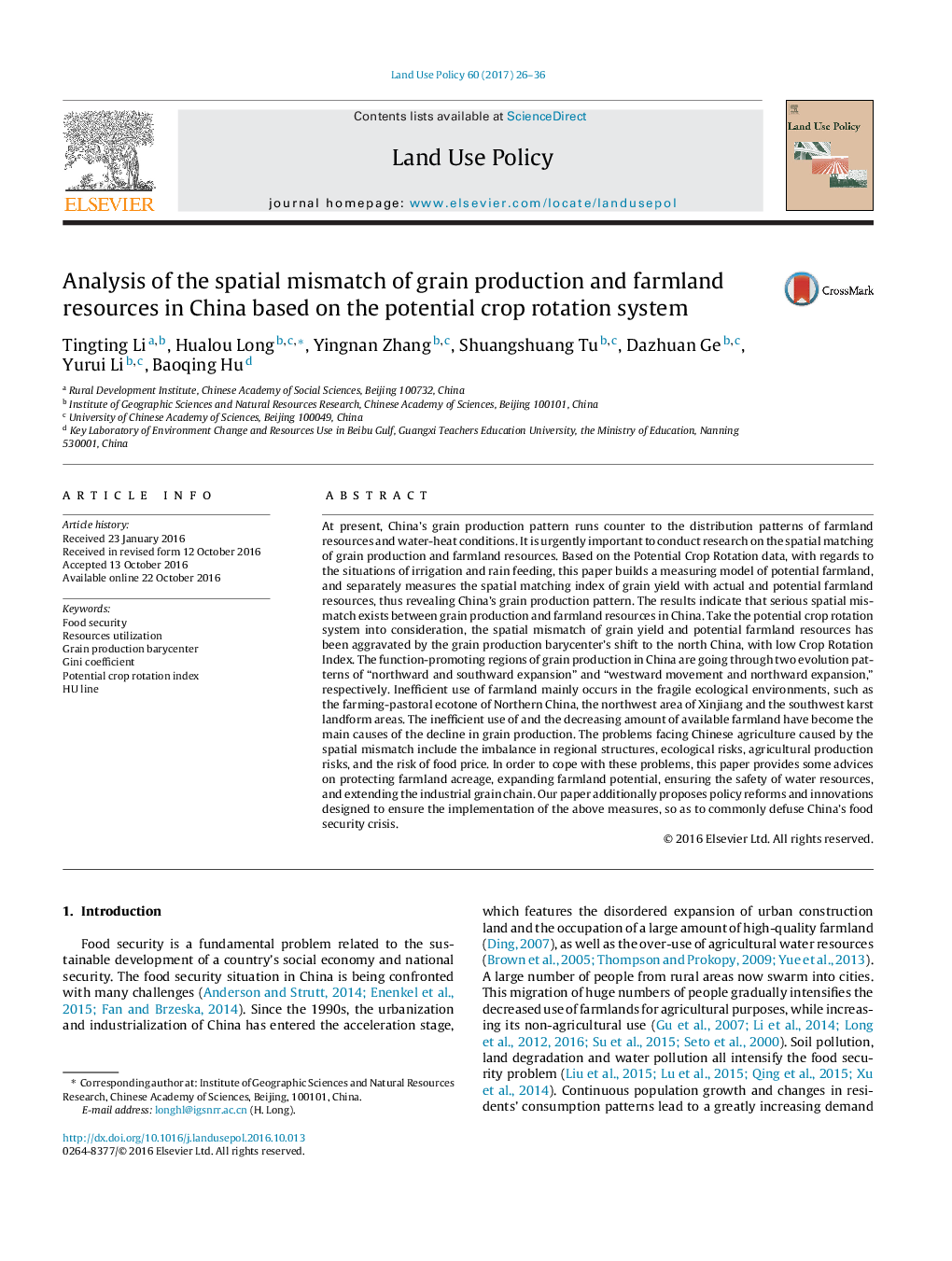| کد مقاله | کد نشریه | سال انتشار | مقاله انگلیسی | نسخه تمام متن |
|---|---|---|---|---|
| 6461379 | 1421823 | 2017 | 11 صفحه PDF | دانلود رایگان |
- Serious spatial mismatch exists between grain production and farmland resources in China.
- Spatial mismatch has been aggravated by grain production barycenter's shift to the north China.
- Build a measuring model of potential farmland based on Potential Crop Rotation data.
- Inefficient use and decreasing amount of available farmland have become the main causes of grain production decline.
- Policy suggestions provided to cope with the spatial mismatch and defuse China's food security crisis.
At present, China's grain production pattern runs counter to the distribution patterns of farmland resources and water-heat conditions. It is urgently important to conduct research on the spatial matching of grain production and farmland resources. Based on the Potential Crop Rotation data, with regards to the situations of irrigation and rain feeding, this paper builds a measuring model of potential farmland, and separately measures the spatial matching index of grain yield with actual and potential farmland resources, thus revealing China's grain production pattern. The results indicate that serious spatial mismatch exists between grain production and farmland resources in China. Take the potential crop rotation system into consideration, the spatial mismatch of grain yield and potential farmland resources has been aggravated by the grain production barycenter's shift to the north China, with low Crop Rotation Index. The function-promoting regions of grain production in China are going through two evolution patterns of “northward and southward expansion” and “westward movement and northward expansion,” respectively. Inefficient use of farmland mainly occurs in the fragile ecological environments, such as the farming-pastoral ecotone of Northern China, the northwest area of Xinjiang and the southwest karst landform areas. The inefficient use of and the decreasing amount of available farmland have become the main causes of the decline in grain production. The problems facing Chinese agriculture caused by the spatial mismatch include the imbalance in regional structures, ecological risks, agricultural production risks, and the risk of food price. In order to cope with these problems, this paper provides some advices on protecting farmland acreage, expanding farmland potential, ensuring the safety of water resources, and extending the industrial grain chain. Our paper additionally proposes policy reforms and innovations designed to ensure the implementation of the above measures, so as to commonly defuse China's food security crisis.
Journal: Land Use Policy - Volume 60, January 2017, Pages 26-36
